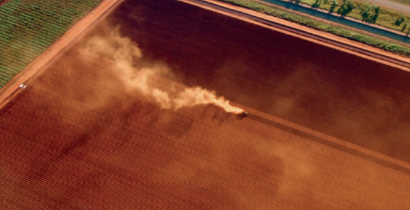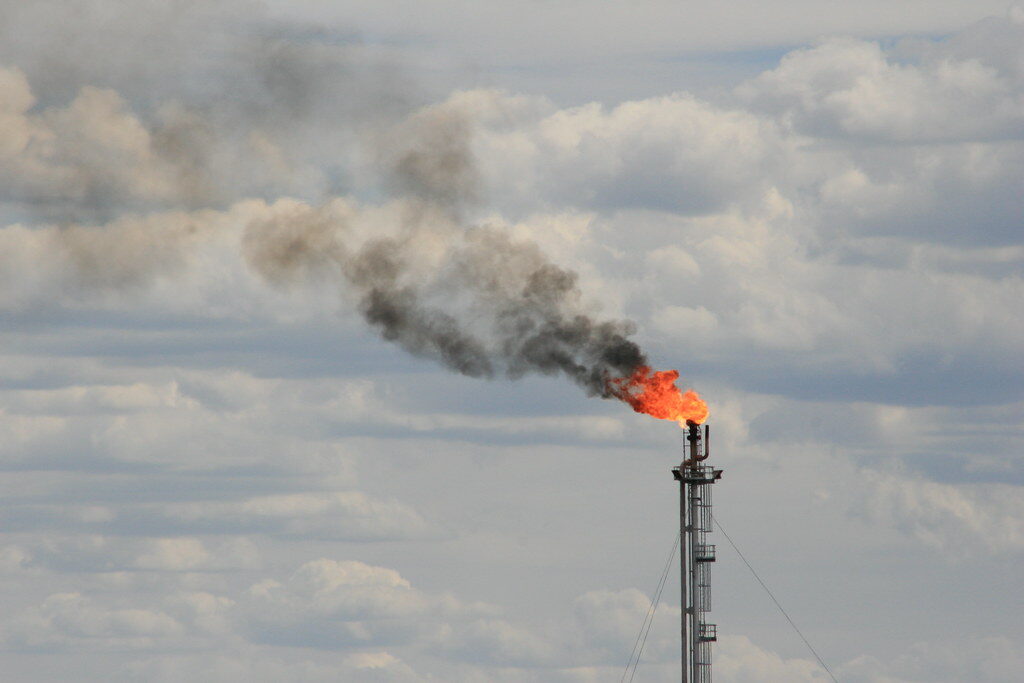The price, quality and seasonality of Australia’s food is increasingly being affected by climate change with Australia’s future food security under threat, our new report has revealed.
Australia’s food supply chain is highly exposed to disruption from increasing extreme weather events driven by climate change, with farmers already struggling to cope with more frequent and intense droughts and changing weather patterns.
Key Findings
1. Climate change is making weather patterns more extreme and unpredictable, with serious consequences for Australia’s agricultural production.
- Climate change is driving an increase in the intensity and frequency of hot days and heatwaves in Australia, changing rainfall patterns, increasing the severity of droughts, and driving up the likelihood of extreme fire danger weather.
- Average rainfall in southern Australia during the cool season is predicted to decline further, and the time spent in extreme drought conditions is projected to increase.
- Water scarcity, heat stress and increased climatic variability in our most productive agricultural regions, such as the Murray Darling Basin, are key risks for our food security, economy, and dependent industries and communities.
- Climatic challenges could result in imports of key agricultural commodities such as wheat increasingly outweighing exports.
2. More frequent and intense heatwaves and extreme weather events are already affecting food prices in Australia.
- Climate change is increasing the variability of crop yields.
- Food prices during the 2005- 2007 drought increased at twice the rate of the Consumer Price Index (CPI) with fresh fruit and vegetables the worst hit, increasing 43% and 33% respectively.
- Reductions of livestock numbers during droughts can directly affect meat prices for many years.
- Rainfall deficiencies in parts of Western Australia and central Queensland are projected to reduce total national crop production by 12% in 2014-15, and the value of beef and veal exports by 4%.
- Cyclone Larry destroyed 90% of the North Queensland banana crop in 2006, affecting supply for nine months and increasing prices by 500%.
- The 2009 heatwave in Victoria decimated fruit crops, with significant production losses of berry and other fruit crops.
3. Climate change is affecting the quality and seasonal availability of many foods in Australia.
- Up to 70% of Australia’s wine-growing regions with a Mediterranean climate (including iconic areas like the Barossa Valley and Margaret River) will be less suitable for grape growing by 2050. Higher temperatures will continue to cause earlier ripening and reduced grape quality, as well as encourage expansion to new areas, including some regions of Tasmania.
- Many foods produced by plants growing at elevated CO2 have reduced protein and mineral concentrations, reducing their nutritional value.
- Harsher climate conditions will increase use of more heat-tolerant breeds in beef production, some of which have lower meat quality and reproductive rates.
- Heat stress reduces milk yield by 10-25% and up to 40% in extreme heatwave conditions.
- The yields of many important crop species such as wheat, rice and maize are reduced at temperatures more than 30°C.
4. Australia is extremely vulnerable to disruptions in food supply through extreme weather events.
- There is typically less than 30 days supply of non-perishable food and less than five days supply of perishable food in the supply chain at any one time. Households generally hold only about a 3-5 day supply of food. Such low reserves are vulnerable to natural disasters and disruption to transport from extreme weather.
- During the 2011 Queensland floods, several towns such as Rockhampton were cut off for up to two weeks, preventing food resupply. Brisbane came within a day of running out of bread.
5. Australia’s international competitiveness in many agricultural markets will be challenged by the warming climate and changing weather patterns.
- Australia is projected to be one of the most adversely affected regions from future changes in climate in terms of reductions in agricultural production and exports.
- Climate impacts on agricultural production in other countries will affect our competitiveness, especially if warmer and wetter conditions elsewhere boost production of key products such as beef and lamb.
6. If the current rate of climate change is maintained, adaptation to food production challenges will be increasingly difficult and expensive.
- By 2061, Australia’s domestic demand for food could be 90% above 2000 levels, with a similar increase in export demand.
- Transitioning to a new, low-carbon economy is critical to avoiding the most dangerous impacts of climate change.
- The longer action on climate change is delayed, the more likely it is that progressive, small-scale adaptive steps to cope with climate change will become increasingly inadequate and larger, more expensive changes will be required.













